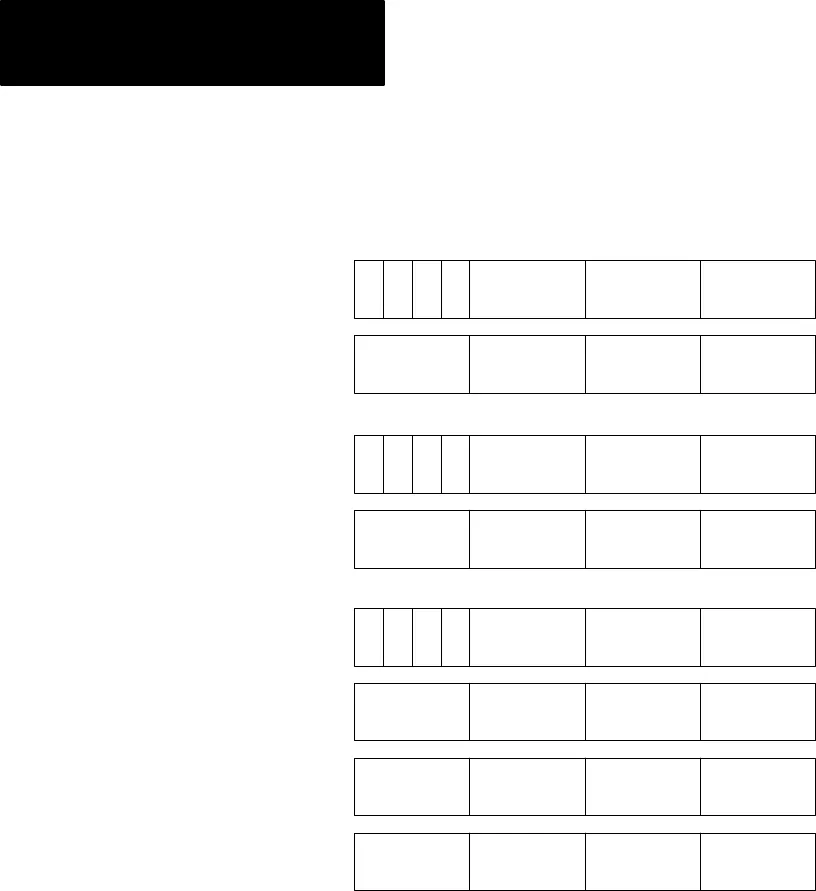
Programming
Chapter 3
316
Figure 3.11
AF1 Multiplication Function Format After Address Entry
171615141312111076543210
S
Digit 1
(MSD)
Digit 2 Digit 3
Bit No.
Data Address
Digit 5
Digit 6
Digit 4
(LSD)
Operand 1
S
Digit 1
(MSD)
Digit 2 Digit 3
Digit 5
Digit 6
Digit 4
(LSD)
Operand 2
S
Digit 1
(MSD)
Digit 2 Digit 3
Result Address
Digit 5Digit 4
Result
DE
E = Enable Bit (1 = Function in Progress)
S = Sign Bit (1= Negative)
D = Done Bit (1 = Function Complete)
MSD = Most Significant Digit
LSD = Least Significant Digit
11488
Digit 8 Digit 9
Digit 11
Digit 12
Digit 10
(LSD)
Digit 6
Digit 7
201
202
203
204
305
306
307
310
3. Enter a data address and a result address.
If we enter a data address of 201 and a result address of 305, the AF1
establishes the data table format shown in Figure 3.11. The data address
eventually contains the most significant three digits of operand 1. The AF1
reserves the next three higher addresses for the least significant three digits of
operand 1 and the six digits of operand 2. The result address contains the most
significant three digits of the result. The AF1 reserves the next three higher
addresses for the remaining nine digits of the result.










